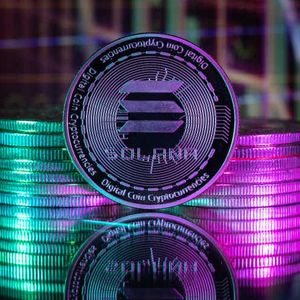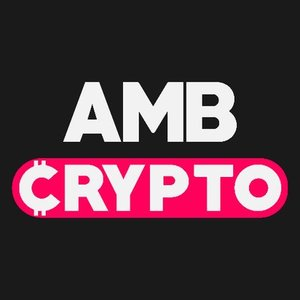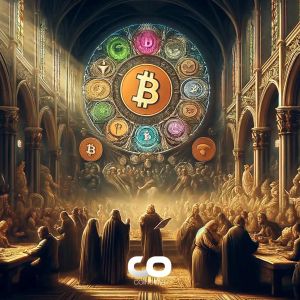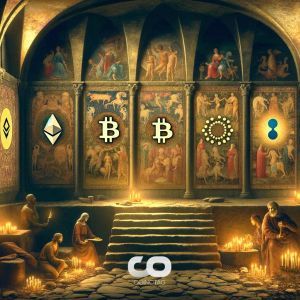Summary Solana has outperformed Bitcoin and Ethereum, with a 500% increase in value since September. Solana's USDC supply has more than doubled since September, indicating positive growth and potential utility for the blockchain. In spite of the large runup in coin price, SOL's circulating P/F ratio has actually been cut in half over the last five months. When I last covered Solana ( SOL-USD ) for Seeking Alpha, the coin was at the beginning of a what has turned out to be a massive 500% run from about $20 per coin to over $120 by the end of December. Data by YCharts Beyond outperforming Bitcoin ( BTC-USD ) and Ethereum ( ETH-USD ), SOL has beat every asset in crypto with a top 20 market cap ranking since the start of September. Frankly, the only one that really comes close to matching this performance is Avalanche ( AVAX-USD ). AVAX and SOL have similarities in that they're smart contract chains that serve as significantly cheaper alternatives to Ethereum. L1 Average Fees By Chain (IntoTheBlock) Ethereum and Bitcoin quite notoriously have higher fees than the other competing layer 1 chains. During times of high activity, these fees can often surge to levels that make day to day usage cost prohibitive and we saw this play out a few times during 2023. Solana is substantially cheaper to use and generally allows for faster settlement. The major trade-off here is the chain is far more centralized than some of the other chains displayed in the chart above. In this update, we'll look at how the stablecoin market on Solana has changed since Visa's ( V ) pilot program announcement last year, we'll get into what else is driving this network activity on the chain, and we'll explore some additional metrics and key risks to consider before going long SOL to capitalize on ecosystem growth. DeFi/Stable Market If you recall what I wrote in the Visa pilot program section of my last article, I suggested keeping an eye on Solana's USDC ( USDC-USD ) supply on chain: Going forward, I think it makes some sense to pay attention to the circulating market cap of USDC on Solana and how that trend compares to other blockchains. The rationale here is that an increase in USDC supply on Solana might be indicative of positive growth on a blockchain that was essentially left for dead after the FTX collapse. September 14th was the day before my last SOL article. Using that as our baseline for assessing stablecoin growth between chains, we can see that Solana has been the clear standout winner from our selected peers from my previous note: USDC Supply September 14th, 2023 February 7th, 2024 Change Ethereum $21,325 $21,933 2.9% Arbitrum ( ARB-USD ) $658.5 $378.6 -42.5% Solana $626.3 $1,392.0 122.3% Polygon ( MATIC-USD ) $612.0 $457.2 -25.3% Avalanche $461.2 $279.1 -39.5% Source: DeFi Llama, millions of $ Over the last five months, Avalanche, Polygon, and Arbitrum have seen USDC supply decline by over $615 million between the three of them. This is roughly balanced out by the $608 million USDC supply increase on Ethereum. Meanwhile, USDC on Solana has more than doubled since September, up over $765 million in supply on-chain. This increase in supply is important because it strengthens the potential utility of Solana for both peer to peer payments in a "stable" currency and merchant adoption. Altcoin Hysteria & NFT Action Of course, merchant adoption is unlikely to meaningfully grow in the next year or two. Until that happens, most of the activity on-chain is still pure speculation in things like NFTs and trendy altcoins. One such altcoin is the recently released Jupiter token (JUP-USD). Launched via "airdrop" at the end of January, JUP token is associated with the Jupiter platform - which is a DEX on the Solana blockchain. JUP Claimer Profile (Dune Analytics/jhackworth) Nearly 560k individual Solana wallet addresses claimed the airdrop. Of which, just 23% of them still hold the claimed JUP from that airdrop. According to data from CoinMarketCap, JUP hit a high price of $2.04 per coin on January 31st. As of article submission, that price has fallen by about 75% in a little over a week. These kinds of airdrops are a fairly common story in crypto. Even though these newly minted coins are given out essentially for free to claimers who just have to the pay transaction fee to get the coins, transaction validators generally make out really well when these airdrops happen due to the surge in fees. That said JUP isn't the only thing happening on Solana. The NFT market has had a significant resurgence in recent months and Solana has played a large part in that. Solana NFT Activity (CryptoSlam) With $365 million in sales from December and $239 million in January, Solana's two-month total for NFT sales these last two months are the highest the network has experienced since April/May 2022. At $4.9 billion, Solana is the second chain for all time NFT sales volume in the market after Ethereum's mindboggling $42.5 billion. What makes Solana's volume so impressive is the blockchain doesn't have a single top 30 NFT project by total sales. This would imply it has succeeded at being the small-cost smart contract platform for the NFT market. Valuation and Token Emissions When a chain like Solana thrives off low transaction fees to the user, the obvious question is how are the validators being rewarded for their services. Solana P/F Ratio (Token Terminal) Interestingly, even as the price of SOL has skyrocketed in the last 5 months, the circulating price to fee ratio has been cut in half over that same period of time to an average 223x in January. This is admittedly much higher than the 97.6x P/F ratio for Ethereum but below the 257.6 multiple on Polygon. DAUs have also ripped from less than 84k in September to 405k in January. Even before the JUP airdrop, DAUs were still high at 318k in December. Solana Emissions (Token Unlocks) In addition to fees from transactions, validators receive new token issuance as part of the staking reward. Solana notoriously has a fairly high inflation rate at about 7% annually. So long as the real yield on that staking is positive, it's in the validator's interest to continue staking SOL: Solana "Real Yield" (StakingRewards) In the last 90 days, positive real yield is only a recent occurrence. The real yield from staking SOL is currently about 80 basis points. Of course, this doesn't factor in capital appreciation from the asset itself which has obviously been the bigger reason to hold the currency since September. Network Shutdown Solana has a bit of a reputation for shutting down the network, sometimes for extended periods. Though it has been awhile, it happened again on February 6th as Solana experienced a nearly 5 hour outage: Network Outage (Solana) Apparently a software issued caused the network shutdown according to reporting from Decrypt . The immediate reaction from the market was negative. SOL sold down briefly following the outage but has since recovered. There are two ways to view stoppages like this. On one hand, it shows a high level of validator coordination that could theoretically be perceived as a strength. On the other, the chain is clearly more centralized than other public blockchains in the market. That makes it a potential regulatory concern and we already know the US SEC has declared SOL to be an unregistered security. What remains to be seen is how a court may view that opinion from the agency. Summary Cryptocurrencies aren't like stocks. There are no quarterly reports or revenue guidance. We're largely left to our own interpretations of data and activity. I'm not going to attempt to forecast what Solana's blockchain activity level is going to be a year from now. For better or worse, the best we can do in this space is take more of a thematic approach to our token allocations. Some people buy memes, some buy application governance tokens, others buy network payment tokens. That's what assets like SOL and ETH are. From there we have to think from the perspective of the consumer and consider which network is more likely to reach a critical mass based on real utility like stablecoin swaps. There are clearly risks to consider when buying anything in this market, but I think SOL is one to keep in the mix. I have admittedly taken profit during this runup as I've traded SOL a handful of times. But I do still hold a "coffee can" position that I don't plan to touch for many years. If your thinking is long term, I think SOL is probably still a buy even after this runup.
















